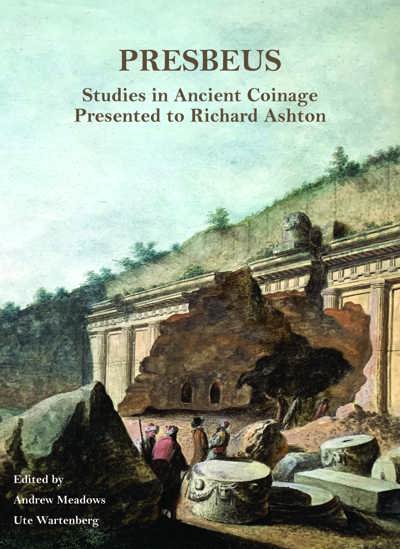
Kushan, Kushano-Sasanian, and Kidarite Coins
A Catalogue of Coins from the American Numismatic Society
David Jongeward, Joe Cribb
- Pages: 322 p.
- Size:216 x 280 mm
- Illustrations:9 b/w, 79 col., 7 tables b/w.
- Language(s):English
- Publication Year:2015
- € 155,00 EXCL. VAT RETAIL PRICE
- ISBN: 978-0-89722-334-8
- Hardback
- Out of Print
The Kushan Empire was a vast inland empire that stretched across Central and South Asia during the first to fourth centuries AD. The origins of Kushan dynasty continue to be debated, and precise dates, especially for the late Kushan kings, remain elusive, but the coinage reveals the Kushan dynasty as a major force in the cultural and political history of the ancient Silk Road.
Kushan coinage began c. AD 50 with issues of the first Kushan king, Kujula Kadphises (c. AD 50–90). The first Kushan coins were based on Greek, Scythian, and Parthian coin designs already current in the territory of present day Afghanistan and Pakistan. Under Kujula Kadphises’ son Wima Takto (c. AD 91–113) and grandson Wima Kadphises (c. AD 113–127) the coinage system was gradually centralized to serve the entire Kushan empire, stretching from Uzbekistan and Tajikistan to northern India. Gold and copper denominations were established during the reign of Wima Kadphises which were maintained through the reigns of ten more kings until the demise of the Kushan empire in the mid-fourth century AD.
This catalogue presents all the Kushan coins in the American Numismatic Society, with selected illustrations, detailed descriptions and commentary. The production system of Kushan coinage is presented with major revisions of chronology and organization compared with previous publications. This presentation has been based on the latest coin-based research, including die studies and site find analysis. The coins are classified by ruler, metal, mint, production phase, denomination, type and variety. Introductory essays present the historical and cultural contexts of the kings and their coins. All the ANS gold coins and a selection of copper coins are illustrated. This catalogue also features two series of coins issued by the Kushano-Sasanian and the Kidarite Hun rulers of former Kushan territory because they followed and adapted the Kushan coinage system.
The authors intend this catalogue to be a tool for scholars and collectors alike for understanding, identifying, and attributing these fascinating coins that represent four centuries of Central and South Asian ancient history.
The Kushan Empire and its Coinage
Kushan Coinage Tradition
Kushan Monetary System and Mints
Previous Studies of Kushan Coins
Kushan, Kushano-Sasanian, and Kidarite Coins in the Collection of the American Numismatic Society
Kushan, Kushano-Sasanian, and Kidarite Coin Types by Ruler
1. Da Yuezhi Coins and the Coinage of Kujula Kadphises (Coins 1–146)
2. The Coinage of Wima Takto (Coins 147–257)
3. The Coinage of Wima Kadphises (Coins 258–369)
4. The Coinage of Kanishka I (Coins 370–708)
5. The Coinage of Huvishka (Coins 709–1081)
6. The Coinage of Vasudeva I (Coins 1082–1200)
7. The Coinage of the Late Kushans (Coins 1201–1688)
Kanishka II
Vasishka
Kanishka III
Vasudeva II
Mahi
Shaka
Kipunadha
8. The Coinage of the Kushano-Sasanians, Part One: Vasudeva Imitations (Coins 1690–2139)
9. The Coinage of the Kushano-Sasanians, Part Two: Royal Issues (Coins 2140–2408)
Unidentified King
Ardashir
Peroz I
Hormizd I
Hormizd II
Peroz II
Varahran
Shapur II
10. The Coinage of the Kidarite Huns (Coins 2409-2444)
11. Unidentifiable Coins (probably Kushan) from the Lincoln Series (Coins 2445–2470)
Appendices
A. North and East India Imitations (Coins A1–A168)
B. Huvishka Portrait Types
C. Deities on Kushan Coins
D. Kushan Tamgas
Addendum: The Story of a Fake Kushan Coin, ANS 1944.100.48106
Concordance to Göbl
Bibliography




